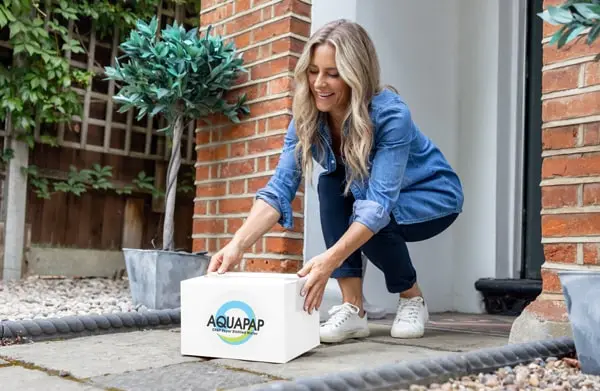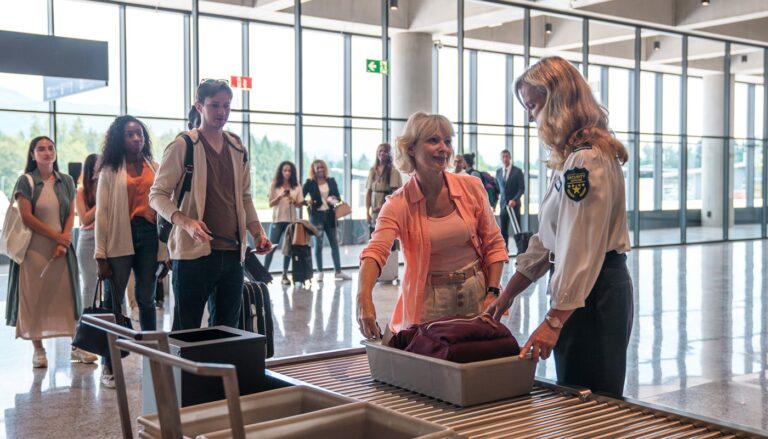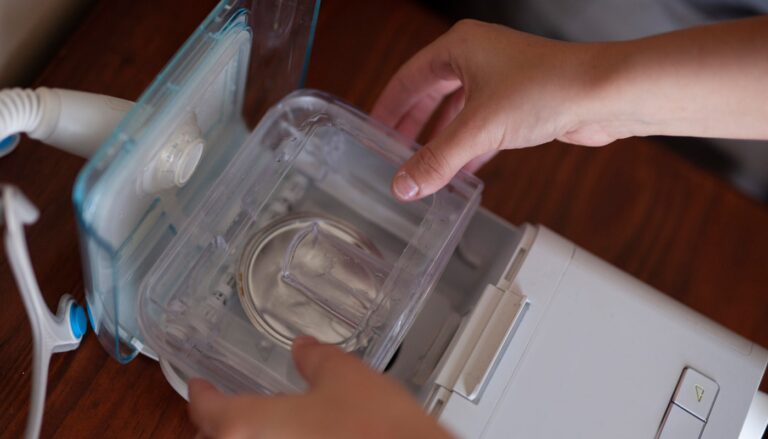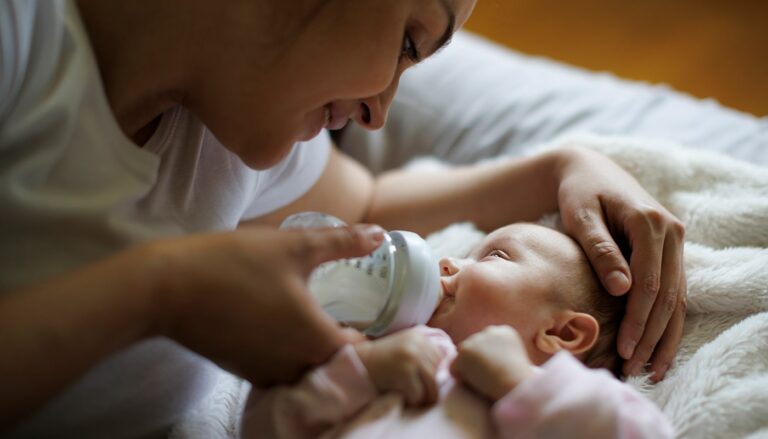CPAP therapy is a vital tool in the management of sleep apnea, a condition that disrupts breathing during sleep and affects millions worldwide. By delivering continuous positive airway pressure, CPAP devices help maintain open airways, leading to improved sleep quality and overall health. Central to this system is the CPAP water chamber, a component responsible for providing necessary humidification to prevent dryness and irritation.
The importance of cleanliness in maintaining your CPAP equipment cannot be overstated. Regular cleaning of the water chamber is crucial for ensuring optimal performance and hygiene, reducing the risk of infections or respiratory issues. Throughout this article, you’ll discover effective strategies for CPAP water chamber cleaning, explore the benefits of using distilled water, and learn the dos and don’ts to ensure a safe and effective CPAP therapy experience.
Understanding CPAP Water Chambers
A CPAP machine is a sophisticated device, primarily consisting of several key components: the motor, pressure control settings, filters, and the humidifier. The humidifier plays a crucial role in CPAP therapy by adding moisture to the air that is delivered to your airways. This prevents dryness and irritation in your nasal passages and throat during sleep.
The heart of the humidifier is the water chamber, where water is stored and heated to create the necessary humidity. This chamber’s function is vital for maintaining comfort and effectiveness in CPAP therapy. Regular refilling with appropriate water types ensures optimal operation and user comfort.
CPAP machines come in different variations, each offering distinct features related to water chambers:
- Standard CPAP Machines: These typically include a basic humidifier setup with adjustable humidity levels.
- Auto-CPAP (APAP) Devices: Equipped with advanced sensors, they can adjust pressure settings automatically based on your breathing patterns, often featuring integrated or detachable humidifiers.
- Bi-level Positive Airway Pressure (BiPAP) Machines: Designed for users needing varying pressures for inhalation and exhalation, these machines often have robust humidifiers to match their advanced capabilities.
Understanding these components and their functions helps you maximize the benefits of your CPAP treatment. Proper maintenance and regular cleaning of the water chamber are essential steps in ensuring effective therapy outcomes.
Daily Cleaning Routine for Your CPAP Water Chamber
Maintaining a clean CPAP water chamber is crucial for ensuring both hygiene and the optimal performance of your device. A daily cleaning routine helps prevent the buildup of bacteria and mold, which can compromise your health and the efficacy of CPAP therapy. Here’s how to keep your water chamber in top condition with some effective cleaning tips.
Step-by-Step Instructions for Daily Cleaning
Ensuring your CPAP water chamber remains hygienic requires a consistent daily maintenance regimen. Follow these steps to maintain cleanliness:
- Disconnect the Water Chamber
- Unplug your CPAP machine, then carefully remove the water chamber from the humidifier unit.
- Empty Remaining Water
- Pour out any leftover water from the previous night’s use. Avoid reusing this stagnant water as it may harbor bacteria.
- Prepare Your Cleaning Solution
- Fill a basin or sink with warm soapy water using a mild soap. This gentle cleanser is sufficient to break down any residue without leaving harmful chemicals behind.
- Clean Thoroughly
- Submerge the water chamber in the soapy solution, using a soft cloth or sponge to wash all surfaces gently. Ensure you reach all corners and crevices where debris might hide.
- Rinse Carefully
- Rinse the chamber thoroughly under running tap water to remove all soap residues. Soap buildup can interfere with machine performance if not completely washed away.
- Dry Completely
- Shake excess water out and place the chamber on a clean towel to air dry completely before reassembling it with your CPAP machine.
Washing Instructions: Keeping Your CPAP Water Chamber Sparkling Clean
To maintain a sparkling clean CPAP water chamber, consider these washing instructions:
- Recommended Soap Types: Use only mild dish soaps or baby shampoos for their gentle properties that won’t damage or leave residue on your equipment.
- Avoid Harsh Chemicals: Steer clear of soaps containing bleach, alcohol, or ammonia as they can degrade plastic components and leave harmful residues.
- Proper Rinsing Techniques: Ensure thorough rinsing by holding each part under a stream of warm water until no soap bubbles remain visible.
It’s important to note that similar principles apply when cleaning other items like breast pump parts, where you might be tempted to just rinse them off without proper cleaning. However, following a thorough cleaning regimen is essential for maintaining hygiene in such cases as well, as highlighted in this discussion on cleaning breast pump parts .
Adhering to this daily cleaning routine ensures that your CPAP therapy continues to deliver effective results, supporting better respiratory health while preventing any potential discomfort caused by unclean equipment. Regular attention to these details plays an essential role in extending the lifespan of
UV CPAP Cleaners: A Modern Approach to Sanitization
For those seeking a convenient and effective way to sanitize their CPAP equipment, UV CPAP cleaners offer an excellent solution. The Liviliti Paptizer and Lumin Sanitizer are leading options in this category, using powerful UV-C light technology to eliminate up to 99.9% of harmful bacteria and pathogens.
How UV-C Technology Works
UV-C light operates at a wavelength of 200-280 nanometers, effectively disrupting the DNA of microorganisms and preventing them from reproducing. This technology has been used in hospitals and laboratories for decades, making it a trusted method for medical-grade sanitization.
Key Benefits of UV CPAP Cleaners
- Chemical-Free Process: Eliminates the need for harsh cleaning solutions
- Time-Efficient: Completes sanitization in just 5-10 minutes
- Cost-Effective: Reduces the need for replacement supplies
- Environmentally Friendly: No disposable cleaning products required
- Gentle on Equipment: No risk of material degradation from chemical exposure
Best Practices for UV Sanitization
- Clean Visible Debris First: Wipe equipment with a damp cloth before UV treatment
- Position Items Properly: Ensure all surfaces receive direct UV exposure
- Maintain Regular Schedule: Use UV sanitization 2-3 times per week
- Follow Device Instructions: Adhere to manufacturer-recommended treatment times
While UV cleaners shouldn’t replace regular soap-and-water cleaning entirely, they serve as an excellent supplementary cleaning method, especially for busy individuals who want to ensure their CPAP equipment remains as hygienic as possible between deep cleanings.
Important Note: UV sanitizers work best on hard, non-porous surfaces. Tubing and masks with textured surfaces may require additional attention to ensure complete sanitization.
Weekly Cleaning Recommendations to Combat Bacterial Growth and Limescale Buildup
Regular weekly cleaning of your CPAP water chamber is crucial for maintaining a hygienic setup and ensuring effective therapy. Over time, the warm and moist environment inside the chamber can serve as a breeding ground for bacteria and lead to limescale buildup. Addressing these issues ensures that your CPAP machine functions optimally and prevents potential health risks.
Why Weekly Cleaning is Essential
- Bacterial Growth: CPAP machines operate with warm air, creating a perfect environment for bacteria to grow. Regular cleaning helps prevent infections or respiratory problems.
- Limescale Buildup: Minerals in water, especially in areas with hard water, can build up as limescale in the water chamber, affecting performance and reducing lifespan.
Instructions for Using Vinegar Solution for Limescale Removal
A simple solution of vinegar and water proves effective in fighting limescale:
- Prepare the Solution: Mix equal parts of white vinegar and distilled water.
- Soak the Water Chamber: Submerge the chamber in this solution for 20-30 minutes. This time allows the acidic properties of vinegar to dissolve mineral deposits effectively.
- Rinse Thoroughly: After soaking, rinse the chamber thoroughly with distilled water to remove any vinegar residue. Ensure no lingering odor or taste remains.
By incorporating these steps into your routine, you maintain a clean CPAP machine that delivers safe and efficient therapy. Regular upkeep not only enhances your machine’s longevity but also supports your overall respiratory health.
General Maintenance Tips for a Well-Functioning CPAP Machine
To ensure your CPAP machine works efficiently, it’s important to follow the manufacturer’s instructions for all parts. These guidelines are created to improve the lifespan and functionality of your device, addressing specific maintenance needs for components like filters, mask cushions, and headgear.
Maintenance Tips for CPAP Components
- Filters: Regularly check and replace filters as recommended by the manufacturer. This prevents dust accumulation, ensuring clean air delivery.
- Mask Cushions and Headgear: Inspect for wear and tear. Replace them as advised to maintain a secure fit and prevent air leaks.
The choice of water in your CPAP humidifier is crucial. Distilled water offers distinct advantages over tap water:
- Prevents Mineral Buildup: Tap water contains minerals that can lead to limescale deposits, potentially obstructing the humidifier’s function.
- Reduces Microbial Growth: Distilled water lacks impurities that foster bacteria and mold, safeguarding your respiratory health.
Regular review of your CPAP machine’s manual ensures you are up-to-date with any changes in maintenance protocols or component upgrades. Following these tips not only enhances the machine’s performance but also contributes to a more comfortable and effective therapy experience.
Cleaning Dos and Don’ts: Ensuring a Safe and Effective CPAP Therapy Experience
Best Practices for Maintaining Cleanliness
- Use Distilled Water: The use of distilled CPAP water in your CPAP water chamber is crucial. It prevents mineral buildup, which can impair the machine’s function and lead to potential health issues. Distilled water benefits include minimizing microbial contamination and ensuring the longevity of your equipment.
- Regular Cleaning: Establishing a consistent cleaning routine helps maintain the hygiene of your CPAP setup. Daily rinsing and weekly deep cleaning are recommended to keep bacterial growth at bay.
Common Mistakes to Avoid
- Avoid Tap Water: Using tap water can introduce minerals and contaminants into your CPAP machine, leading to scaling and residue that can affect performance. This can also pose a risk of microbial growth, potentially compromising your health during therapy.
- Steer Clear of Antibacterial Soaps: While it might seem beneficial, antibacterial soaps often contain harsh chemicals that can damage the water chamber material. Opt for mild, fragrance-free soaps instead.
Maintaining these practices ensures a safe therapy experience while optimizing the performance of your CPAP machine. Addressing these dos and don’ts will enhance both the effectiveness of your treatment and the lifespan of your equipment.
Health Considerations: Why Regular Cleaning is Crucial for Your Well-Being During CPAP Therapy
Regularly cleaning your CPAP equipment is essential for keeping the machine working well and also for taking care of your health. If you don’t make this important routine a priority, it can lead to various health risks associated with unclean machines. These risks include infections and breathing issues, which can greatly affect your overall well-being.
1. Infections
An unclean CPAP machine can harbor bacteria, mold, and fungi. When these harmful organisms are inhaled during sleep, they may cause infections such as sinusitis or respiratory tract infections. This risk highlights the significance of sticking to a strict cleaning schedule.
2. Respiratory Problems
Dust, allergens, and other pollutants can build up in a neglected CPAP device. Breathing in these particles may result in respiratory complications or worsen existing conditions like asthma.
During times when you’re sick, it’s even more important to clean your equipment more often. Being ill can weaken your immune system, making you more vulnerable to the negative effects of an unclean machine. By consistently cleaning your CPAP gear, you shield yourself from potential health dangers and create a better therapy experience.
Choosing the Right Water for Your CPAP Machine: Exploring Vapor-Distilled Water and Aquapap Products
Selecting the appropriate water for your CPAP humidifier is crucial to ensure both optimal performance and longevity of your machine. Vapor-distilled water stands out as an ideal choice due to its purity and effectiveness in preventing mineral buildup, which can damage the humidifier over time.
Benefits of Using Vapor-Distilled Water
- Purity: Vapor-distilled water is free from minerals and contaminants, reducing the risk of deposit formation inside your CPAP equipment.
- Safety: The absence of impurities minimizes potential microbial growth, safeguarding your respiratory health.
- Efficiency: By preventing scaling, it maintains efficient humidification, ensuring consistent moisture levels for user comfort.
Overview of Aquapap’s Product Offerings
Aquapap provides a range of vapor-distilled water products specifically designed for CPAP users. These offerings are tailored to meet various needs with a focus on convenience:
- Travel-Friendly Sizes: Available in compact bottles (8 oz, 12 oz, 16.9 oz), making them perfect for travel or home use.
- Subscription Options: Flexible ordering through subscriptions or one-time purchases ensures you never run out of essential supplies.
- Customer Satisfaction: With positive feedback from healthcare professionals and users alike, Aquapap’s products are trusted for their quality and convenience.
Aquapap not only offers high-quality vapor-distilled water but does so with a commitment to user convenience. Their diverse product sizes and flexible ordering options make maintaining your CPAP equipment hassle-free, whether at home or on the go. To explore their range of vapor-distilled water products specifically designed for CPAP users, visit Aquapap’s website.
Maintaining Hygiene and Optimizing Your CPAP Performance for Better Health Outcomes
Sustaining your CPAP therapy involves more than just using the machine consistently. CPAP water chamber cleaning is a crucial part of your routine that ensures the device operates smoothly and safely, enhancing your treatment effectiveness. A clean water chamber not only prevents unwanted respiratory issues but also prolongs the lifespan of your equipment by reducing the risk of mineral buildup and bacterial growth.
- Regular Maintenance: Keeping a consistent cleaning schedule helps maintain optimal hygiene, ensuring that each use of your CPAP machine is as beneficial as possible.
- Health Benefits: A properly maintained CPAP water chamber contributes significantly to improving sleep quality and overall well-being.
The dedication to maintaining cleanliness reflects on both the functioning of the device and your health outcomes, making it an integral aspect of successful CPAP therapy.






